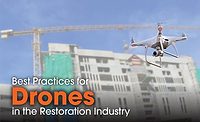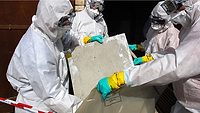6 Best Practices for Water Damage Restoration Professionals

Photo credit: Rainbow International
Every industry has their experts, and every expert has their lane. However, I have seen far too many instances where insurance adjustors, contractors or others working at the scene veer out of theirs and into ours. They seem to forget that the onsite restoration professionals are the ones who know the most about water restoration.
The good news is that this reality can shift. With a micro approach that focuses on how we can do our jobs more effectively, and a macro approach that communicates our expertise to the marketplace, we can all help promote the credibility and competence of the professionals in our industry.
High Tech Meets Old School
My career in restoration began in 1996 as a water technician, and in the three decades since, we have seen a technological revolution that has made way for better tools, faster solutions and new capabilities. Still, in the midst of this wonderful innovation is the constant need for two things much more old school: Training and communication.
No matter how high-tech or successful our industry becomes, restoration professionals must spend time learning the trade, but not just the basics of a job well done. We must all take a deep dive to know the laws, guidelines, best practices, equipment, techniques and rapidly changing software, so we are informed and prepared to assist customers, and make a healthy difference in our communities.
Credentials Matter
There are many restorers who have a finite view of education in our Industry. Once they attain a one or two entry-level certification, they feel their formal learning has reached its end or they can speak as an industry expert. However, we should never stop learning. I encourage everyone to pursue advanced designations such as the Restoration Industry Association’s (RIA) Water Loss Specialist (WLS) or the highest designation in our field, the Certified Restorer (CR). There are also third-party organizations such as the ACAC that offers many designations across a wide spectrum of disciplines. When we are utilized as experts in our field, those who employ our services should have confidence that they are dealing with someone who has put in the work to master their craft, and continues to learn and elevate the restoration world.
How do we establish authority and credibility, and ensure our industry keeps operating at the highest levels of service? By following a set of guidelines that push us to be the best we can.
The proper application and use of knowledge is power, and power shapes perception. How do we establish authority and credibility, and ensure our industry keeps operating at the highest levels of service? By following a set of guidelines that push us to be the best we can. To assist in this endeavor, here are my top five best practices for water restoration professionals.
1. Learn the Trade in Depth
There is learning the basic functions of a trade, and then there is really learning everything you can about the trade. I recommend utilizing any and all educational tools available. One in particular, the ANSI/IICRC S500 Standard for Professional Water Damage Restoration, provides “the principles and foundation for proper water restoration practices.” It outlines a clear training path, including earning the water damage industry’s most prestigious designation (the RIA WLS), and provides guidelines that direct competent restorers in the creation of drying plans as well as direction on when to utilize an Indoor Environmental Professional on projects.
2. Get Out Into the Field
Our industry is complex and complicated, and there is no question that classwork and training are key to providing an educated foundation. While classes will get you certified and ready, this is just the start. Field experience is critical to really understanding the job so you can fully leverage what you have learned in the classroom.
3. Remember, Communication Is Key
Whether we are on the job or in the office, we must talk to one another. Ensure that everyone on the team is knowledgeable about the assignment, safety protocol, deadlines and anything else necessary to complete the work. While the Water Technician is the ultimate decision maker, everyone needs to be briefed so the job can be completed as smoothly as possible.
4. Choose Your Words Wisely
When filling out paperwork for the customer and the insurance company, remember that words matter. Be careful how you explain the problem and solution. A wrong or inaccurate description can lead to delayed payments or rejected coverage.
5. Think About Tomorrow and Train Up the Next Generation
Someone taught you, so pay it forward. Training and instructing future water damage restoration specialists properly is important for the growth and reputation of our industry. Many industries, from nursing to engineering, are suffering from a shortage of trained workers. Keep the flow going in restoration so we can continue to provide safe, effective solutions for homes and businesses around the nation.
6. Sit Comfortably on the Cutting Edge
Our industry is always evolving, thanks to technology, scientific advancements and human ingenuity. Stay vigilant about learning and growing by keeping up with developments in water damage restoration. Read, study, network and learn. One of the best places to network with other thought leaders is at the annual RIA Convention and Industry Expo. Change is inevitable and also beneficial when it helps our industry conduct business better, smarter and more efficiently.
In a crowded marketplace, it can be hard to cut through the noise and reach customers. By following these best practices, your business can excel in new and different ways.
Looking for a reprint of this article?
From high-res PDFs to custom plaques, order your copy today!









